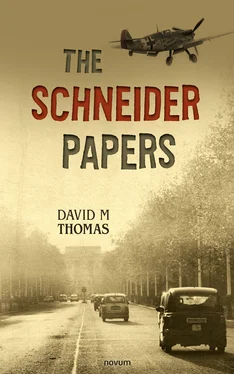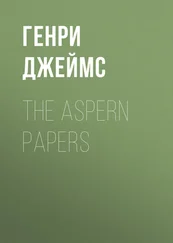He called them his DCs, his Diggers and Compilers – his band of helpers. Sat at their desks or bent over large work desks designed for spreading out papers, maps and reference books, talking together in groups or compilers alone with their matrix thoughts. The whoosh of sliding library ladders moving along the floor to ceiling bookshelves – diggers looking for a particular reference annual or putting one back. Cartwright had begun building his DCs, virtually from scratch, before the move to his new home, his new Industrial Resource Section. He wanted analytical thinkers; look for inconsistencies, put a series of events in proper order, use logic to pick apart a problem and come up with a solution or a reason for inconsistency. Curiosity and lateral thinking ability were prerequisite; age and gender specifications weren’t. He picked only the best that he could get his hands on. In more than one instance an IRS candidate reject landed up in some other building that defined Whitehall. The age group was decidedly mid-twenties to mid-thirties, or as one statistician put it: an age mean of twenty six, a median value of twenty eight, and a mode of twenty nine, Cartwright excluded. Two thirds were university graduates.
He had spent his time slowly and methodically. Linguists with an aptitude for analytical thinking. Non linguists with the ability to solve problems. A good example was young Sarah Stephens. He had spotted her by chance during a lunch break at a Foreign Office canteen he rarely visited. Obviously waiting for a lunch companion, she got out of her handbag a small compendium of cryptic crossword puzzles and became so engrossed in its word play clues that she hardly noticed her lunch companion sit down next to her. Cartwright, sat not too far away, listened in to parts of the conversation. She was employed as a clerk in the personnel section of one department or another, and came across as a shy unassuming person, but with her own views on world events, and how she would tackle them. An intelligent free thinker. She joined Cartwright in the ballroom the following week.
And so it went, the slow but steady building of the team. Ballroom size and budget allocation determined the numbers, but strength and depth was his personal responsibility. He was judicious in his choosing. He was aware of the mindset of some of the analysts he brought in – in essence, not popular in the outside world. They gave the impression of being arrogant, especially because they did not hesitate to speak their minds with their often harsh criticism and self-confidence. He knew that it would take time for the team to gel, but once friendship was made he would have a formidable group of people ready to meet the challenges of the section, its Committee, and upward to its Whitehall masters.
It took him nearly a year to gather and recruit and get the personnel architecture right in his DC section. They constituted the heart and mind of his little known organisation. The soul was himself, Cartwright the arbiter. What should he disclose, what to keep in the back pocket for another day. All dependant on his near term objective and subjective analysis of current government thinking and world events.
The Industrial Resource Section had a supervisory board called the Industrial Intelligence Committee and was itself was made up of a Treasury mandarin, useful for currency and foreign exchange advice and assistance, as well as being a Cartwright mole inside the Treasury; a couple of Ministry of Labour civil servants, general industry statistics and manipulation thereof experience, useful for understanding arguments in statistical inconsistencies – gamekeepers turned poachers, or poachers turned gamekeepers, take your pick. The Committee had the authority to bring in, as required, outside specialists in a particular field of investigation for brain-picking or ‘swabbing down,’ as it was known in the ballroom, chaired by one Major Alastair Cartwright MC.
The IRS was to remind political and military strategists of the resources required to conduct modern warfare. It concerned itself with specific imports, storage facilities, shipyards, railway stock, and chemical refineries as much as Military Intelligence did with tanks, naval destroyers and bombers. It was no more important to know the number of panzer divisions in Germany than to realise that the German industrial complex in the Ruhr was likely to need seven million tons of high grade iron ore in the first year of war and that the bulk of this would come from where? Sweden? Spain? Or both? And through which port? Hamburg? Or somewhere much nearer to the end user in the Ruhr valley, like Rotterdam in nearby Holland perhaps?
His organisation in time reached an information critical mass. He could only do so much with foreign press cuttings, almanacs and intelligence scraps for which he had to virtually beg at tables for. What he now needed, a phase two, as he called it, and to borrow the language of international industry, were in-country representatives. Operatives with the gumption to wheedle out information in real time. Opportunity driven people. They would be residents in certain to-be-decided intelligence required hot-spots, as designated by his Committee; get a feel for the place, the politics, current events and act independently on opportunities, with only a light steer from the captain’s velvet chair.
The hurdle, as always in intelligence gathering, was funding. Cartwright put his other hat on, that of a Secret Intelligence Service grandee, and discussed his expansion plan in an office on Victoria Street. In principle there was agreement. Cartwright’s nemesis, the internal budget allocation sub-committee, was also copied in to the memoranda which passed back and forth between IRS and the SIS. Finally, a balding chap with a nervous eyebrow tick turned up unannounced at the ballroom one rainy morning and informed Cartwright in an unexcited tone that he had received approval, additional budget to be paid by the SIS. However, as with all Whitehall favours, there were certain caveats, as the balding man was quick to stress – on the insistence of SIS and the Chiefs of Staff Intelligence Committee. IRS was not authorised to do anything subterranean. All above ground. Subterranean activities most definitely not allowed. SIS would get sniffy and muscle in, he warned, and all military type information was to be passed on immediately, underline and repeated, to the relevant service intelligence committees. For this cross my heart and hope to die promise, it was agreed that Cartwright and his IRS could access and, within reason, ‘infiltrate’ (Cartwright’s word) the political and Military Attaché pool at British embassies abroad.
Cartwright got his foot in the door for direct clandestine work. Argue the toss later. He knew what the SIS condition meant, he had agreed the rules of engagement with his SIS colleagues earlier. No spying or espionage per se, just information gathering as one would at a drinks party or dinner conversation for example. God bless HMS Opportunity and all who sail in her, thought Cartwright as he later toasted himself.
By the mid 1930s, IRS had a number of country managers scattered around the globe. Miscellaneous Armed Forces Attachés, Passport Officers, a representative of the British Council empowered to educate less fortunate nationalities to British culture, and even the odd so-called overseas trade promoter, unbeknownst to the Board of Trade which paid his salary.
***
The omens were there when the government signed that naval pact with Germany in June 1935. Cartwright could not believe that a similar Air Force arrangement had been proposed by the War Office. It was beginning to be clear to him that perhaps the Foreign Office was losing ground to the War Office in collusion with the Cabinet Office. Their common goal was appeasement. There was a very strong and dangerous argument that a re-armed Germany would counter the communist Soviet Union. Indeed, in one War Office paper Cartwright read, it positively lauded, albeit hypothetically ‘… German expansion plans to the east … as it would not greatly increase German strength … as annexation of Slav districts would weaken the racial cohesion of the Reich.’ This report, which Cartwright read with disbelief, stated that ‘… sooner or later German expansion would bring her into conflict with the Soviet Union …’ and here was the crux of the thinking, ‘… and a conflict would probably ruin our two potential enemies in Europe … we have little to lose and everything to gain …’ Cartwright just sat and stared out into the ballroom. He felt as he did in 1917 before going climbing out of the trench just outside the village of Arras in northern France.
Читать дальше












